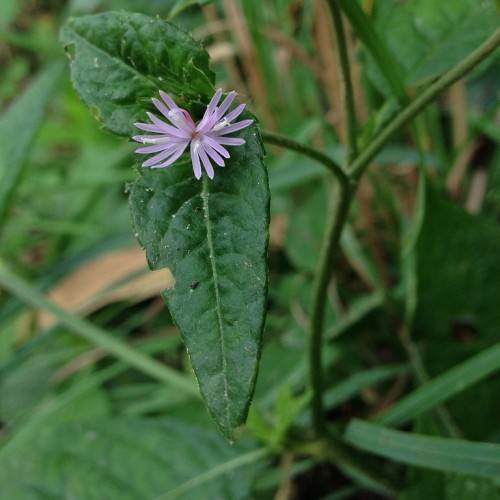
elephant's foot
Elephantopus carolinianus
Cycle:
Herbaceous Perennial
Watering:
Minimum
Hardiness Zone:
4 - 9
Flowers:
Flowers
Sun:
Part shade
Growth Rate:
Low
Maintenance:
Low
Drought Tolerant:
Yes
Salt Tolerant:
Yes
Thorny:
Yes
Care Level:
Medium
watering
Elephant's foot requires average to low watering and it is best to check the soil before watering. During the warmer months, Elephant's foot should be watered when the top inch of soil has just started to dry out, usually once a week. During cooler months, watering should be reduced to once every week to 2 weeks. The soil should never be allowed to dry out completely. Overwatering should also be avoided, as this can cause root rot and other issues. Avoiding soggy soil and providing excellent drainage is the best way to ensure its health.
sunlight
Elephant's foot (Elephantopus carolinianus) is a plant species that thrives with bright, full sunlight. The plant prefers to receive at least 5 hours of direct sunlight a day and will do best with 8 to 10 hours of sun. This plant needs to receive its sunlight during the morning and early afternoon hours in order to maximize the amount of photosynthesis that it can produce. It is important to not expose this plant to late afternoon or early evening sunlight as this could cause severe sunburn and damage to the leaves. Elephant's foot will also thrive when given some shade in the heat of the day. Early morning or late afternoon shade can prevent the leaves from burning or showing signs of stressing.
pruning
Elephant's foot should be pruned once a year in the early spring, before new growth occurs. Remove any dead, damaged, or diseased branches and flower heads. Cut back any stems that are taller or have outgrown their space. Always make clean cuts and avoid leaving jagged edges, as this can introduce disease and pest problems. When done correctly, pruning can positively shape the appearance of the elephant's foot and encourage the formation of healthy new shoots.
